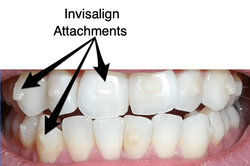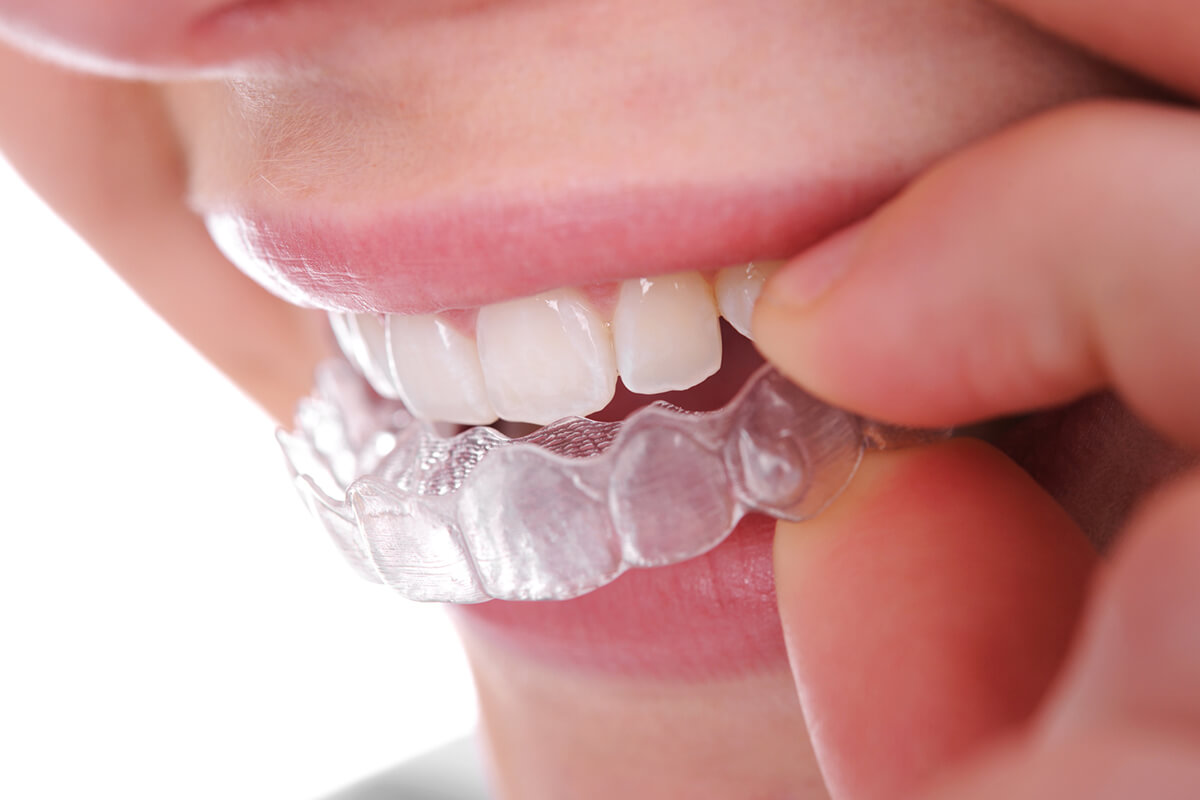Discover the Benefits of Invisalign for a Perfect Smile Improvement
Discover the Benefits of Invisalign for a Perfect Smile Improvement
Blog Article
Invisalign vs. Traditional Dental braces: Which Choice Is Right for You?
When thinking about orthodontic treatment, the choice between Invisalign and traditional dental braces presents numerous vital factors that warrant cautious examination. Invisalign supplies a very discreet choice with detachable aligners, while standard braces offer a more visible yet effective remedy for severe imbalance.
Summary of Treatment Alternatives

On the other hand, typical dental braces are composed of metal braces and cords that are bonded to the teeth. This method uses continuous stress in time to attain positioning. While reliable for complex orthodontic issues, standard dental braces call for regular visits for modifications and can posture challenges in keeping oral hygiene because of the trouble of cleaning around cables and braces.
Both choices have their merits, and the option commonly rests on details dental conditions, way of life choices, and patient compliance. Eventually, speaking with an orthodontic expert is vital for determining the most suitable therapy strategy tailored to specific needs. Understanding the nuances of each choice can dramatically affect the total success of orthodontic treatment.
Aesthetic Considerations
A considerable factor affecting the option between Invisalign and conventional dental braces is the aesthetic appeal each therapy provides. Invisalign aligners are crafted from clear plastic, making them virtually unseen when used.
In contrast, typical braces include metal braces and cables, which can be more obvious. While advancements in orthodontic technology have actually resulted in the growth of smaller sized brackets and tinted elastics, standard dental braces still maintain a more obvious account. For some individuals, the visibility of braces might deter them from seeking required therapy.
Inevitably, the option between Invisalign and conventional braces might hinge on personal choices relating to looks. Clients that prioritize discretion often lean toward Invisalign, while those that are much less concerned regarding visibility might select conventional dental braces. Recognizing the aesthetic effects of each option is vital for making an informed decision that lines up with one's way of living and preferences.
Comfort and Convenience

In terms of convenience, Invisalign aligners are detachable, making it possible for individuals to appreciate their favored foods without constraint and preserve optimal dental health. Brushing and flossing are streamlined, as the aligners can be obtained throughout these routines, whereas traditional dental braces need careful maneuvering around wires and brackets.
In addition, Invisalign's modern system allows for less orthodontic sees. People typically obtain several sets of aligners at the same time, visit this site right here which can improve the treatment procedure and decrease time invested in the orthodontist's chair. In comparison, standard braces demand regular changes, making them less hassle-free for those with hectic schedules. Invisalign. Generally, the convenience and ease of Invisalign make it an enticing selection for many people seeking orthodontic therapy.
Therapy Duration and Effectiveness
While both Invisalign and standard dental braces work more tips here in dealing with dental imbalances, the period of therapy can vary significantly between both alternatives. Typically, Invisalign treatment can take anywhere from 12 to 18 months, depending upon the intricacy of the instance. The clear aligners work by slowly changing teeth right into their desired positions, and routine follow-ups with an orthodontist assistance make certain progress continues to be on track.
On the other hand, standard dental braces often require a longer commitment, normally ranging from 18 months to three years. This is because of their set nature and making use of cords and brackets, which can be much more reliable for intricate instances and extreme imbalances (Invisalign). The treatment performance of traditional braces is well-documented, as they permit specific changes and greater control over tooth motion
Eventually, the choice between Invisalign and standard dental braces might pivot on both the expected therapy duration and the particular oral issues handy. Consulting with an orthodontist is important, as they can give customized referrals based upon private requirements, making sure the chosen technique straightens with preferred end results and durations.
Cost Comparison and Insurance Coverage Options
Price plays a substantial function in the decision-making process for individuals taking into consideration orthodontic therapy, whether deciding for Invisalign or standard dental braces. Typically, the cost of Invisalign arrays from $3,000 to $8,000, while standard braces usually set you back in between $2,000 and $6,000. Aspects influencing these costs include the complexity of the case, the duration of treatment, and geographical place.
Lots of oral insurance plans supply partial protection for orthodontic treatments, however the specifics can vary extensively. Normally, traditional braces might be extra frequently covered by insurance coverage strategies compared to Invisalign, which some insurers classify as an aesthetic treatment.
In addition, numerous orthodontic methods use versatile payment strategies, making both treatment choices extra available. People must inquire about potential funding alternatives and discount rates for upfront payments. Evaluating the overall cost, including insurance policy advantages and layaway plan, is vital for making a notified decision that lines up with both visual preferences and spending plan considerations.

Verdict
In recap, the choice between Invisalign and typical dental braces rests on multiple elements, consisting of visual choices, comfort, treatment duration, and cost. Invisalign provides a very discreet, detachable choice that facilitates oral hygiene and dietary flexibility, while typical braces may be better for complicated oral concerns and frequently come with a reduced price factor. Eventually, consultation with an orthodontist is necessary to evaluate individual situations and determine one of the most appropriate treatment alternative for attaining ideal oral positioning.
When thinking about orthodontic therapy, the option in between Invisalign and conventional braces provides a number of vital aspects that merit cautious evaluation.Contrasting Invisalign and typical braces exposes distinctive therapy options for orthodontic modification.While both Invisalign and typical braces are reliable in fixing dental imbalances, the duration of treatment can vary considerably in between the 2 options.Expense plays a considerable function in the decision-making process for people considering orthodontic treatment, whether opting for Invisalign or typical dental braces.In recap, the choice in between Invisalign and typical braces hinges on multiple aspects, over at this website including aesthetic choices, convenience, treatment duration, and expense.
Report this page